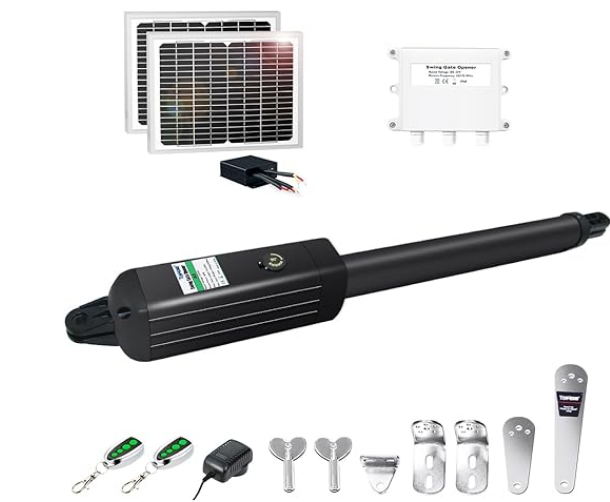
How Much Does It Cost for an Electric Gate?
Motorized gates, automatic gates, electric gates. No matter what you call them, there’s no denying they’re convenient. An automated electric gate is a luxury, but it’s also a security upgrade and can make accessing your property easier for everyone.
However, if you’re weighing the pros and cons of getting an automated gate, one of the most common questions is how much does it cost for an electric gate. Let’s take a closer look at what you might expect to pay and what might affect the cost of an electric gate.
How Much Does an Automatic Gate Cost?
|
The first thing we need to discuss is the cost of an electric gate, and here, there are several factors that need to be considered. First, what type of gate are you looking to automate? A sliding gate, a swing gate, or a double swing gate? Some types of gates, like double sliding gates and double swing gates, actually require two gate motors or gate operators, so they cost more than other types of gates. The cost of an automatic gate also depends on if you are installing a new gate or retrofitting an existing one with a gate motor or gate operator. However, regardless of what the specifics of your project is, you can problem expect to pay several thousand dollars for your automatic gate system. |
What Affects the Cost of Automatic Electric Gates?
On their own, a good quality gate operator and the accessories needed to complete a standard installation will usually cost at least a few hundred dollars to $2000 or more, depending on the type and power of the gate operator you need, and with labor to install it, you can probably double whatever the cost of the gate operator is.
However, even though a standard gate motor installation is not cheap on its own, there are also several things that might increase the cost of automating your sliding or swing gate. These include:
- The cost to bring power to the gate – most gate motor installers don’t trench or run power cables, and if they do, you will pay extra for the trenching, cabling, backfilling, and repair of any surface over the trench
- Extra peripherals like card readers, intercoms, and other equipment
- Entry and exit loops, which are buried wires connected to a special device in your gate operator that acts as a switch to open or close your gate
- Larger, more powerful gate operators, which might be required if you have a very heavy gate, or you need a gate motor that can handle higher duty cycles (number of opens and closes in one day) will cost more than smaller, residential gate openers
- The quality of the equipment used – there are some cheaper options in the gate automation world, but they’re often imported products with less after-sales service and less actionable warranties – you want to buy a gate operator that is locally manufactured and has a large network of after sales support, as well as one that comes with a good warranty
- If you need to install a new gate or modify your existing gate before you can motorize it, that will cost more money, too
Should You Consider a Cheap Electric Gate Deal?
There are always companies out there offering deals on gate automation, and sometimes they seem too good to be true when you compare them with market-related prices from other companies.
Unfortunately, gate motors are one of those things where you usually get what you pay for, and while it might be tempting to go for what seems like a great deal, there’s a good chance that you will only end up spending more money to repair or replace the equipment sooner rather than later.
Always ask for references from any gate automation company you’re considering working with and contact a few of those references to find out what their experience has been like. Ask for brand-name equipment, and always tell your gate automation company if you plan on adding more equipment or accessories later. There might be things they can do now to make it easier and cheaper to do those things later. This could be as simple as installing conduit under your gate or making minor changes to the gate design to allow for those future changes.


